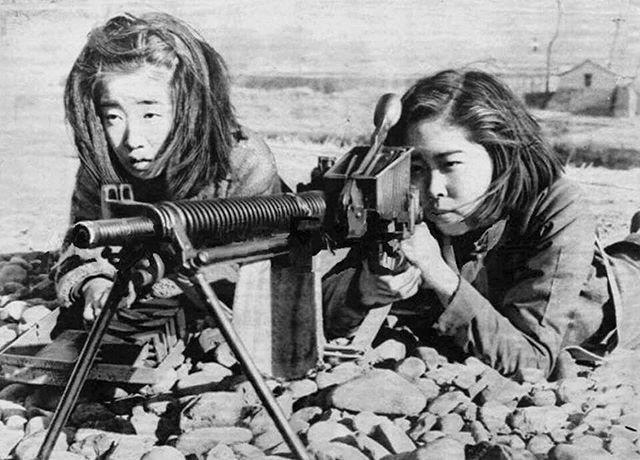The Japanese military situation by 1945 was perilous. Even the most ardent Imperial militarist had long since given up on winning the Pacific War. Japan's strategy was now only how total defent and occupation could be prevented. The strategy was to cause as many Allied (meaning mostly American) casualties as possible. They sought to bleed the Americans so severely that the United States would not dare invade the Japanese Home Islands. Incredably they still clung to illusion that the Americans were a weak-willed people that could not stomach losses. Many Japanese military commanders were still convinced that they could out last the Americans. [Thomas, p. 139.] Here the Japanese resistance at Iwo Jima and Okinawa along with the Kamikaze attacks had considerable success. There were heavy Amerucan losses, although only a fraction of the Japanese losses. The terrain of the Home Islands was similar to that of Okinawa--very mountenous. There was no doubt where the Americans would strike first -- it had to be the southern-most island of Kyushu where the landings could be covered by air bases on Okinawa. American intelligence assessments reported indications that the Japanese were heavily reinforcing Kyushu. Men and equipment were being brought back from China and Manchuria to stenthen the forces already on Kyushu. Much of these reinforcenents were moving through the port of Nagasaki. The Yellow Sea was one of the few places that Japanese marus could still move with some degree of safety--although that was beginning to change. President Truman began to see a series of Okinawa campaigns and huge casualties up and down the Japanese Home Islands from Kyushu to Tokyo. He requested for caualty estimates from General Marshal annd astronimical figures surfaced. The Japanese prepared the Shosango Vctory Plan for the defence of the Home Islands. Prime-minister Kantarô Suzuki took office (April 1945). The government expanded the Shosango plan with Ketsugo. Emperor Hirohito approved the plan. The idea was to defend the Home Islands to the last man, actually the last person. And this did not mean just soldiers, but civilans as well--including children. Ketsugo was to prepare the Japanese people psychologically to die as a nation in an effort to defend the Imperial Japan. School children, boys and girls, were to be taught to construct makeshift weapons such as sharpened bamboo poles. Soldiers were assigned to schools to show children how to do this. We are unclear at this time just to what extent the Japanese were actually implementing Ketsugo. A Japanese reader from Tokyo tells me that he was sent into the country and received no such training. Other reports indicate that children were receiving this training. One fact is certain, American planners did expect a suisidal and costly Japanese resistance and given what bhappened in Iwo and Okinawa, this is likely what would have occurred. The caualties resulting from the Japanese strategy and the liklihood of even more fierce resistance on the Home Islands is a factor that has to be taken into account in the assessment of the subsequent decession to use the atomic bombs bombs.
Sources
Thomas, Evan. Sea of Thunder: Four Commanders and the Last Great Naval Campaign, 1941-1945 (Simon & Schuster: New York, 2006), 414p.
CIH -- WW II

Navigate the CIH World War II Section:
[Return to Main ending the War page]
[Return to Main World War II home front page]
[Return to Main Japanese World War II page]
[Return to Main World War II Pacific campaign page]
[Biographies][Campaigns][Children][Countries][Deciding factors][Diplomacy][Geo-political crisis][Economics][Home front][Intelligence]
[POWs][Resistance][Race][Refugees][Technology]
[Bibliographies][Contributions][FAQs][Images][Links][Registration][Tools]
[Return to Main World War II page]
[Return to Main war essay page]
[Children in History Home]
Created: 7:40 PM 7/23/2019
Last updated: 7:40 PM 7/23/2019



